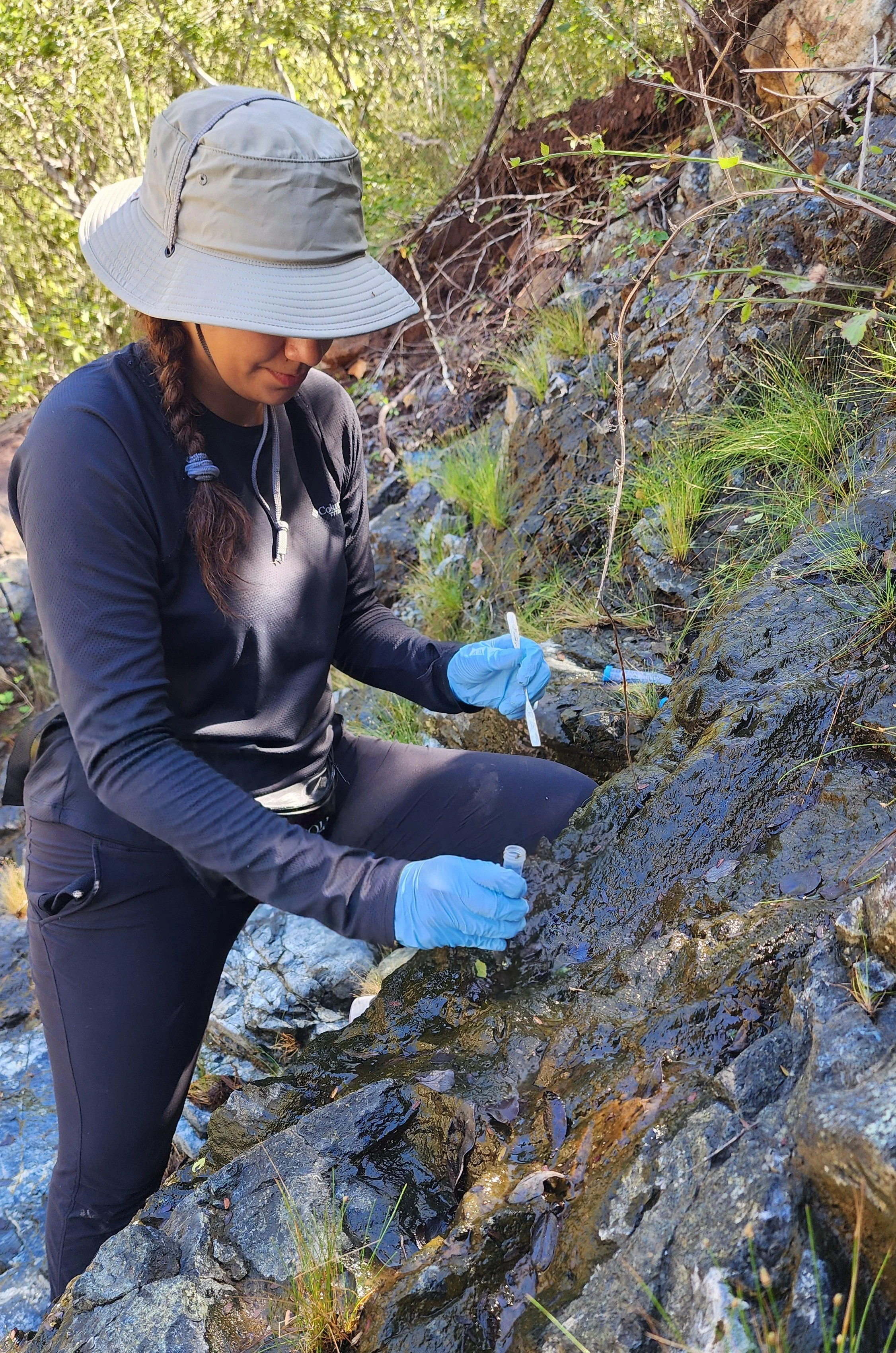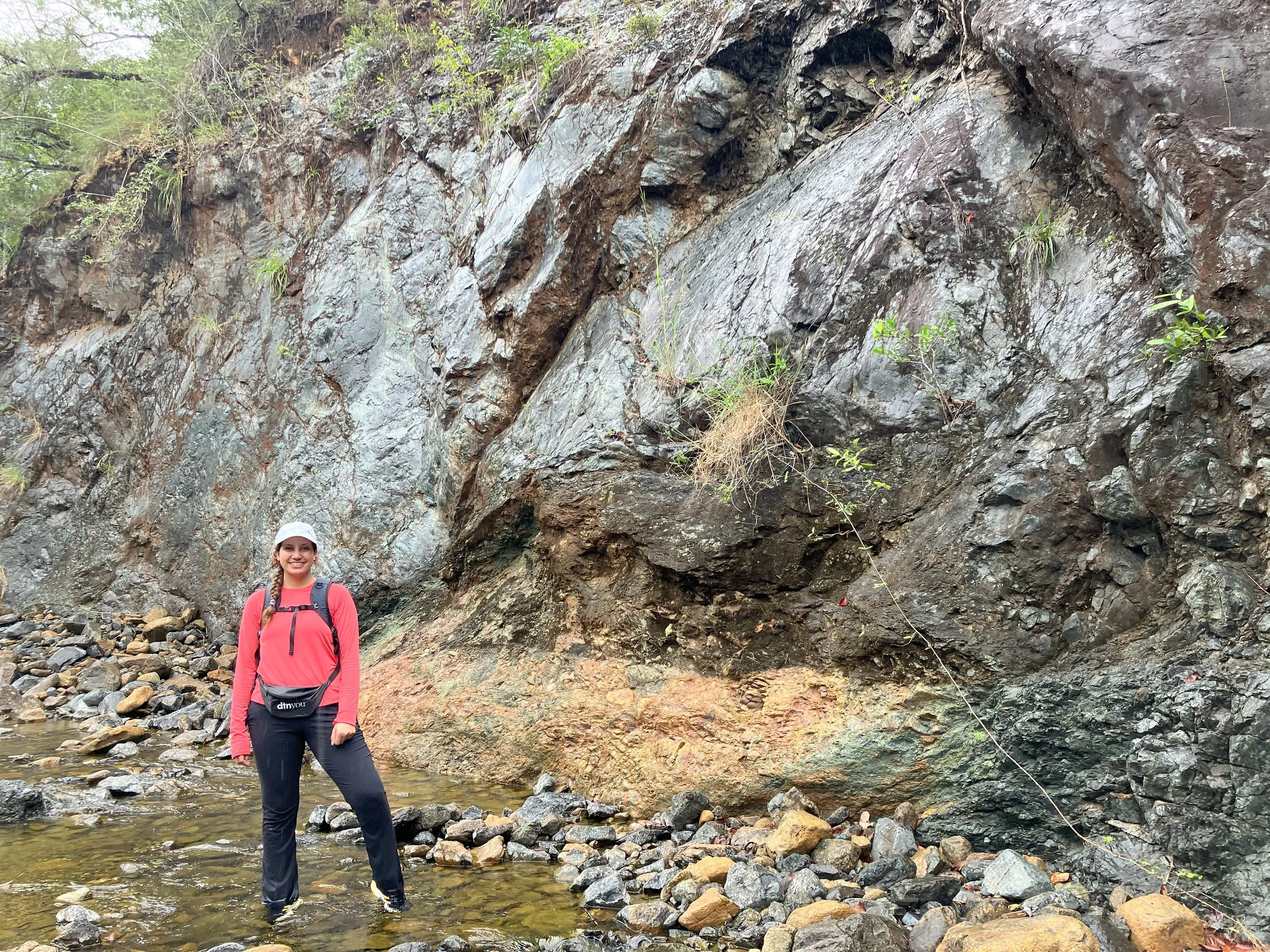Astrobiology Revealed #24: Sarah Gonzalez-Henao
on microbial biofilms as models for habitability
by Aubrey Zerkle
For this Q&A, we spoke with Sarah Gonzalez-Henao, a second-year PhD candidate at Michigan State University, about her recent paper, “An astrobiological perspective on microbial biofilms: their importance for habitability and production of detectable and lasting biosignatures.” Sarah discusses how biofilms protect their microbial inhabitants from harsh conditions, and their potential to provide both organic and inorganic biomarkers for extraterrestrial life. (This interview has been edited for length and clarity.)
I saw in your bio that your Bachelor's and Master's degrees were in Molecular Biology and Biotechnology - how did you become interested in applying those fields to the search for extraterrestrial life?
It started when I was in high school! My dad really likes science, he is a doctor. He introduced me to a course on Coursera called Astrobiology and the Search for Extraterrestrial Life, by Charles Cockell. I already knew that I wanted to study general biology in college, but after taking that course, my horizon was expanded. I really became interested in life in extreme environments, like how microbes can survive at really high temperatures and pressures, and the search for life in the universe. Trying to answer those questions was really fascinating! I did my undergrad in Colombia, and in my country, there’s not a lot of research in astrobiology. So, I had to wait until my PhD to dive into it.
In your recent minireview in Applied and Environmental Microbiology, you proposed that biofilms are a model system to study habitability of extreme environments, on Earth and beyond. Can you tell us what biofilms are and why they are so successful in these environments?
Biofilms are like a shield that a family or community of bacteria produces. They secrete a matrix into the environment to protect themselves from harsh environmental conditions that might not allow them to live, like high temperatures or high pH. The matrix has different biomolecules, including polysaccharides, proteins, and lipids, so it is highly dynamic and resistant to different stressors. The bacteria can modify the biofilm according to their needs. It’s the dynamic and variable composition of these biofilms that allows them to adapt to different stressors and meet their energy demands.
Does that mean biofilms living in low pH environments are made of different biomolecules than biofilms living in high temperature environments, for example?
Yes! For instance, I studied some sequencing data from the Lost City hydrothermal vents, which are deep in the ocean at high pressure and high temperature. We’ve noticed that there are some specific exopolysaccharides [EPS] that are predominant in the biofilms according to the environment. There is a polysaccharide called gellan that is protective under the high temperature and high pH conditions predominant there. We’re studying different types of extreme environments to see if the composition [of the biofilms] also changes with the environment, but that’s the general trend we’re seeing so far.
Microbes are so brilliant, it always amazes me! You listed the different adaptations in Table 1 of your paper – which ones do you think would be most useful for microbes to survive in extraterrestrial environments?
One of the most interesting adaptations for these biofilms is against metals in the environment. Biomolecules within the matrix can bind heavy metals and serve as a kind of bioremediation. They can bioaccumulate not only heavy metals, but also some other metals that are essential for growth, acting as chelators. For instance, they can trap iron that the bacteria can process for basic functions. They have a bunch of organic molecules that trap and dissolve metals that the bacteria need, so I think that’s a very interesting adaptation and function.
Another one that I really like is the high temperature adaptations, which are these polysaccharides that are the major component of the biofilm. As I told you, in the Lost City, we found this specific polysaccharide, gellan, that resists high pH and high temperatures. So these biofilms are very dynamic in adapting to their specific environmental conditions to protect this community of bacteria. They can also modify the thickness of the biofilm. At these high temperatures, the biofilm can be thicker. That’s also increasing the protection and the shield for the bacteria!
You’ve been discussing how the environment changes the composition of the biofilms, but you also stated that “the biofilm producers can shape the environment for increased habitability.” Can you briefly explain what you mean by that?
For sure! One example is that in really low temperatures, some of these EPS biomolecules can induce pores in ice, creating a small microenvironment surrounding the cells and the biofilm. It’s like a little house for the microbes!
They can also create interactions with different minerals. The biofilms need a substrate or somewhere to attach to in order to grow. One type of substrate can be a mineral top surface, or really any type of mineral, rock, or soil. So, many of the microbes that produce biofilms have these organic molecules that interact with minerals. The interaction of the biomolecules in the matrix with the minerals creates pore spaces that can be considered hot spots for life under extreme conditions.
Can biofilms provide niches for other types of life, or just bacteria?
So far, I’ve only studied bacterial biofilms. But some eukaryotes, like diatoms, produce biofilms as well. So, there might be some competition and other types of ecological interactions between these microorganisms going on in there. Some of them can eat their neighbors, or they might not like them and produce some toxic molecules to expel them.
It’s like a little war going on in there!
Yes, there are a bunch of things going on within these biofilms! One of the functions of the biofilm is to allow for cell communication. Some of the cells produce molecules to let other bacteria know about starvation or other things that are going on. It’s called quorum sensing. So that’s also a very interesting process. There’s a bunch of physiological activity going on in the biofilm, it’s like a small world!
Imagine if we could tap into that and see what the microbes were talking to each other about.
Yes, definitely!
In your paper, you also reviewed the different types of microscopy and spectroscopy that researchers use to study biofilms on Earth. Which of these methods do you think could be most useful in identifying biofilms on other planets?
I would say Raman spectroscopy is the most powerful technique, because it allows not only for characterization of the inorganic matrix, but also the organics. The problem is that some of these techniques for detecting organics are very hard. But some of these biofilms produce biomolecules like lipids that are very resistant to degradation, so they can be potential biosignatures for the search for life.
That’s also what I’ve been working on in my thesis, trying to propose a set of biosignatures that come from these biofilms. I think if we “characterize” Raman spectra of biofilms in specific environmental limits, the biosignatures that we propose can be fed into the Raman library and used to search for life in the universe.
That’s great! Isn’t Raman spectroscopy already being used on one of the rovers?
Yes! NASA’s Perseverance is making use of a Raman, which has been investigating organic compounds on Mars. It’s called the SHERLOC [Scanning Habitable Environments with Raman & Luminescence for Organics & Chemicals]. But I think there are some limitations for the limit of detection, and other types of problems. So improving the capability of this technique to detect or search for biosignatures might be one way forward.
We actually did a Q&A with Caroline Freissinet last month, who is studying organics with the SAM instrument on the Curiosity rover. One of the issues she specifically mentioned is that interpreting the data from these rovers is really difficult, because it’s so complex, and they don’t always know what they’re looking for. It sounds like your project will be really useful for interpreting that data.
Yes, that’s exactly what we’re trying to do.
You also argued that understanding the physiology of biofilms on Earth is essential for astrobiology, since there are still so many unanswered questions about how biofilms work, even here on Earth. In your opinion, what are the most important questions researchers should be focusing on?
In terms of biofilm physiology, a great knowledge gap is the different types of biofilms that form under diverse extreme environments. In general, people think of biofilms as thick mats, but biofilms can be many things, like a thin layer on top of a mineral. So, expanding research on the types of biofilms and how they can change and meet their demands under extreme conditions, I think that’s a big gap.
Another unknown that is most related to astrobiology is the role of biofilms as a fabric of minerals. That’s something related to the question you asked earlier, that biofilms can change the environment by secreting and forming minerals. This is a process called biomineralization that is very important. But there is a big knowledge gap about how these biofilms can trigger these bioprocesses and what the environmental conditions and mechanisms are. We should dig more in-depth into these types of questions, as well as how to study them in the lab under a controlled environment. It is very hard to culture a community and mimic the biofilm conditions in the environment. To bring that into the lab is very challenging!
So I will say we need to understand more about molecular mechanisms, regulations, and dynamism in these biofilms. These will be the key to determining if they can be applied to understand how life thrives elsewhere, on Mars and other extreme environments.
What’s next for you – are you tackling any of these questions as part of your PhD?
For my thesis, I’m focusing on biofilms from extreme environments, specifically high pH. I’m studying hyperalkaline springs in Costa Rica, which is a Mars analog environment. It’s a serpentinizing system, where water-rock reactions produce high pH, methane, and a lot of hydrogen. This is a very dynamic place – the weather is extreme during the dry season and the wet season, and the pH is 11.5. We’re trying to figure out how biofilms thrive under these hyperalkaline conditions at the physiological and molecular level. So far, I’ve been focusing a lot on how the biofilms can increase habitability for these microbes living inside them under high pH. The other part is the biosignature aspect. We’re trying to see what potential biosignatures these biofilms can produce that we can propose for future missions.
Besides the astrobiology aspect, I’m also very interested in biotechnology. Many of these biomolecules from the biofilms have a lot of potential for biotechnology applications. For example, the exopolysaccharides that are the main components of the biofilm can trap heavy metals, but they can also trap other types of contaminants. So, I am also very interested in applied science for bioremediation purposes. I’m doing culturing experiments and screening to find these exopolysaccharides from the high-pH bacteria, and looking for new interesting microbes or polysaccharides that can do any other function. Like the one that is stable at high pH and high temperature in the Lost City!



